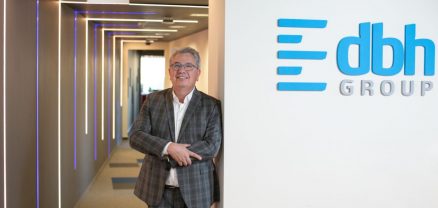What is an agile work environment like?
Today, our economy is going through huge changes. In our fast-paced world, companies are merging or buying up smaller ones, while employees are also looking for the best job for them and will immediately change if they think they can find better conditions elsewhere.
What does the phrase mean?
It is a workplace that adapts to the changing needs of employees. A single space can serve several different purposes, at several different times, for several different groups of people. However, the concept of an agile work environment goes far beyond adapting the space to the needs of the employees. A truly agile work environment gives employees the opportunity to stay productive and, if they choose to stop and rest for a moment.
What makes a workspace efficient and flexible?
In our opinion, agility equals flow. Employees need to be able to move in and out smoothly. Doors, walls and other elements can hinder flexibility. People do not like being confined, especially if they have a dynamic work style. Nowadays, tasks are varied, but adequate comfort is essential for agile work. Employees who are uncomfortable spend more time adapting than working. In open, mobile places, it is difficult to ensure a certain level of calm, peace and quiet. The lower the level of interruptions in a work area, the more efficiently employees can perform their tasks.
A modern serviced office must meet these requirements, so it is essential that the rooms can be easily rearranged if necessary.
In our country, the agile work environment has already been introduced in several large companies. What indicated the need of an agile work environment in these companies? The rapidly changing business environment, emerging competitors, constantly changing prices.
In other words, the constantly changing economic conditions.
What changes does a company need to make to keep up with this fast-paced world?
Before the agile transformation, companies worked in a “classic” functional organization. Their build was large and slow. Decision-making was therefore also slow and involved endless meetings. In agile work, management creates agile “tribes” and “squads,” and the support teams are reorganised into “centers of excellence.” The resulting agile teams work in a completely different way.
Yes, but then comes the question: how does this affect the areas of the office? Agile working results in much fewer meeting rooms, and thus new types of office spaces (e.g. scrum rooms) are emerging. Large open offices with 30-60-100 workstations have been replaced by 8-16 person rooms.
In an agile environment, work is done efficiently, rarely at a steady pace or stationary. Based on this information, we can say that the biggest variable in employee agility is the workspace. But we must not forget that agility is not only measured in speed. It can also be measured in terms of flexibility and adaptability. If we would like to have an agile workforce, we must definitely support our employees with flexible spaces.
An environment that adapts to their needs, and the business will enjoy the benefits of an engaged, prepared and efficient workforce.

Do not hesitate to contact us
Get in touch, if you have any question


